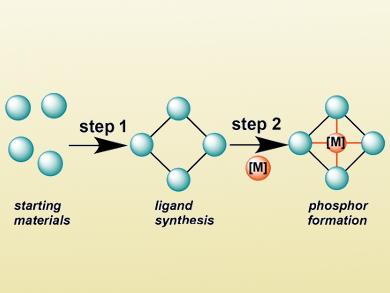In recent years, the use of machine-assisted synthesis has helped to streamline the discovery of organic compounds such as pharmaceuticals, agrochemicals, and fragrances. Robotically controlled microwave- and continuous flow-setups have led to systems that can operate unmanned 24 hours a day and deliver results to human operators.
Simon J. A. Pope, Duncan L. Browne, Cardiff University, UK, and colleagues have applied these machine-assisted techniques to the discovery of complexes with tunable luminescent properties. The team wanted to demonstrate the applicability of a modular flow/microwave system for the synthesis of a novel series of ligands and the subsequent microwave-driven assembly of Ir(III) complexes.
A series of fluorinated pyrazole ligands were synthesized and then further reacted to form iridium pyrazole complexes [Ir(ppz)2(bipy)]BF4 (bipy = 2,2′-bipyridine). Isolation of spectroscopically pure species was carried out in less than one hour under microwave irradiationstarting from IrCl3. The resulting materials show tunable luminescent properties. The researchers hope that a second-generation system will be able to carry out both ligand synthesis and complex formation in one machine, including the automated screening of the luminescence properties.
- From Ligand to Phosphor: Rapid, Machine-Assisted Synthesis of Substituted Iridium(III) Pyrazolate Complexes with Tuneable Luminescence,
Lara M. Groves, Christiane Schotten, Joseph Beames, James A. Platts, Simon J. Coles, Peter N. Horton, Duncan L. Browne, Simon J. A. Pope,
Chem. Eur. J. 2017.
DOI: 10.1002/chem.201701551




